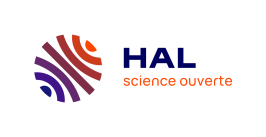Détail du document
Identifiant
oai:HAL:anses-04040543v1
Sujet
dust assessment dust sheet test laying hens validation [SDV]Life Sciences [q-bio]Auteur
Mousqué, Solène Mocz, Frédérique Riber, AnjaLangue
enEditeur
HAL CCSD;MDPI
Catégorie
sciences : sciences du vivant
Année
2023
Date de référencement
08/12/2023
Mots clés
0 layer veterinary sheet 2–3 test assessment levels dustRésumé
International audience; The dust level is included in the animal welfare legislation of the European Union, implying assessment of dust levels during veterinary welfare inspections.
This study aimed to develop a valid and feasible method for measuring dust levels in poultry barns.
Dust levels were assessed in 11 layer barns using six methods: light scattering measurement, the dust sheet test with durations of 1 h and 2–3 h, respectively, visibility assessment, deposition assessment, and a tape test.
As a reference, gravimetric measurements were obtained – a method known to be accurate but unsuitable for veterinary inspection.
The dust sheet test 2–3 h showed the highest correlation with the reference method with the data points scattered closely around the regression line and the slope being highly significant (p = 0.00003).
In addition, the dust sheet test 2–3 h had the highest adjusted R2 (0.9192) and the lowest RMSE (0.3553), indicating a high capability of predicting the true concentration value of dust in layer barns.
Thus, the dust sheet test with a test duration of 2–3 h is a valid method for assessing dust levels.
A major challenge is the test duration as 2–3 h is longer than most veterinary inspections.
Nevertheless, results showed that potentially, with some modifications to the scoring scale, the dust sheet test may be reduced to 1 h without losing validity.
Mousqué, Solène,Mocz, Frédérique,Riber, Anja, 2023, Validation of Methods for Assessment of Dust Levels in Layer Barns, HAL CCSD;MDPI

Systematic Feature Design for Cycle Life Prediction of Lithium-Ion Batteries During Formation
cycle prediction framework feature design features life formation

